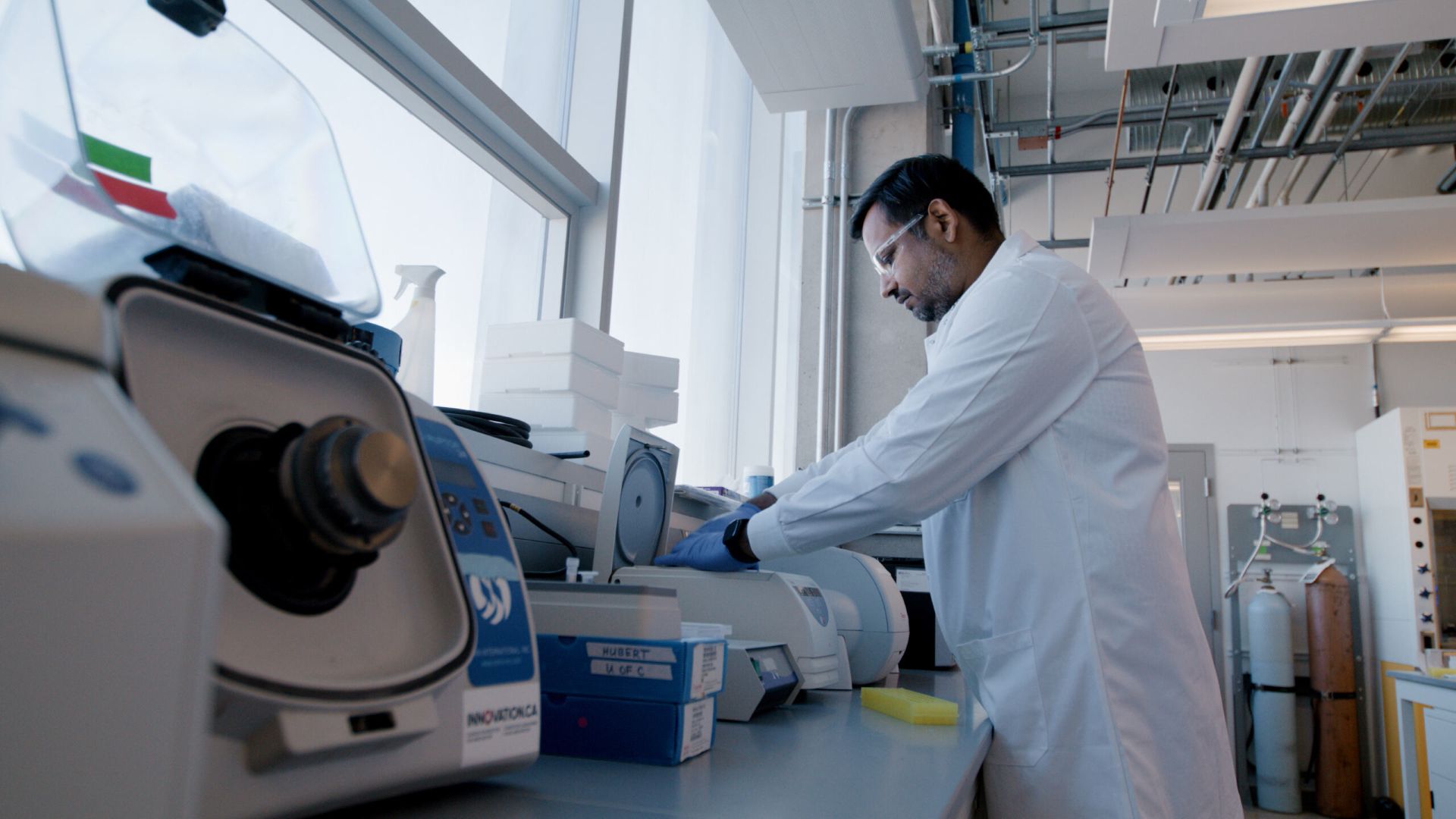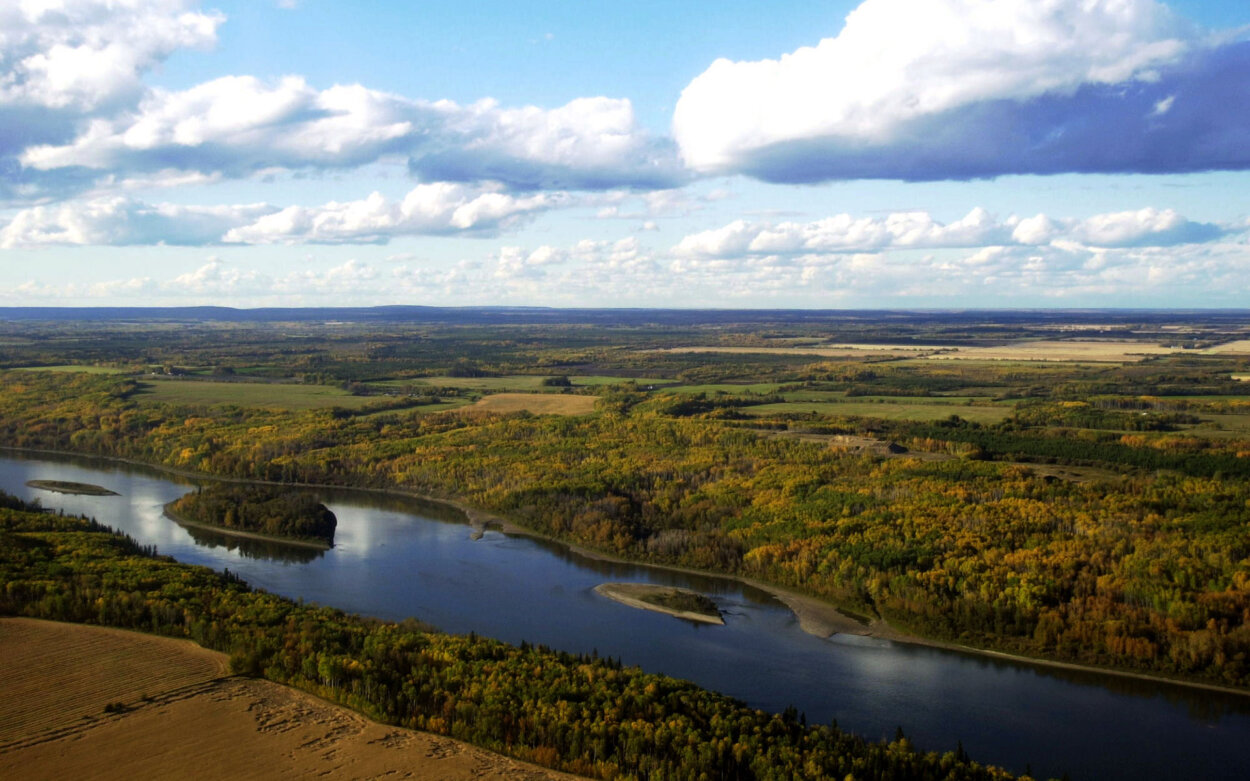Athabasca University science and environment research gets a huge boost with more than $600,000 in federal grants for three projects
Three Athabasca University science researchers have been awarded prestigious federal grants to support work that could improve industrial processes while protecting people and the environment.
Dr. Srijak Bhatnagar, Dr. Martin Connors, and Dr. Junye Wang of AU’s Faculty of Science and Technology have earned a combined $607,500 National Science and Engineering Research Council Discovery Grants. The funding was announced July 9.
These projects will provide hands-on research opportunities for undergraduate and graduate students, both through their programs and as research assistants.
“These grants are an important recognition of our researchers’ impactful work that makes our world a better and more equitable place,” science dean Dr. Shauna Zenteno said. “More importantly, providing opportunities for students to be involved is helping us train the next generation of world-class researchers.”
Harnessing bacteria to help solve microplastics pollution in water
Over the past several decades, plastics in all their forms have become ubiquitous all over the world, and in places we don’t always expect—from the heights of Mount Everest to the depths of the Marianas Trench, and even in the human body.
Bhatnagar, an assistant professor of microbial ecology and computational biology, studies how plastics break down in and interact with the environment, especially at the microbial level.
“The question is, now that we know it’s everywhere, we want to know what it’s doing,” he said. “Because it’s new; it’s something we’ve introduced in the past 50 years.”
This work involves looking at the kinds of bacteria that grow on microplastic found in Alberta’s river systems, what types of pollutants those plastics might be absorbing, how this changes upstream versus downstream from major population centres or industrial sites, and what kinds of ecosystems might be growing on these microplastic pieces.
A specific example of Bhatnagar’s planned work as part of this project is in controlled conditions, to take pieces of microplastics and populate them with different “starting” bacteria, then run river water over them, and determine if different types of starting bacteria affect the ecosystem that develops in different types of microplastics.
“Once we understand that, then we know that if one type of plastic has these five different types of microbes on it, it’s an easy way to then figure out how we can remediate, or do any sort of policy action,” Bhatnagar said.
The Discovery Grant will support the project Microbial Dynamics of Microplastic Biofilms with a total of $202,500 over five years.

Related: How microbes can help us protect the environment
Improving predictions of auroral activity to prevent power failures
Auroras, the solar phenomena that most famously cause spectacular displays of the northern lights in many parts of the world, are happening all the time with varying degrees of intensity. What would happen if a major auroral event knocked out the power system?
It’s an unlikely scenario, but not impossible, said Connors, a professor of astronomy, math, and physics. As recently as 1989, a major auroral event disrupted the power grid in Quebec.
“Power failures caused by auroras—which have happened, it’s not science fiction—would have a huge impact on society, obviously,” he said. “Society would grind to a halt without electricity, so reliability of electricity is extremely important.”
His research focuses on measuring auroral activity and improving the efficiency of the instruments used to monitor and predict this kind of major catastrophic event. The specific work this grant will support focuses on both the theory behind these predictions and improving the instrumentation used to measure electrical fields in the Earth and make these predictions.
For example, power companies do this type of monitoring so that they might temporarily suspend operations to protect portions of the power grid when a major event is expected. But Connors said there are flaws in the current theory used to make these predictions, and the instrumentation currently used to measure electrical fields can be extremely expensive. His work aims to address both issues.
“First, I’m saying probably the way you’re doing it right now is not good enough from a theory point of view,” he said. “We’re also not measuring the effect directly, and we want to do that. So we’re building equipment to measure the effect directly, at a lower cost.”
The Discovery Grant will support the project Theory and Data Analysis for Induced Electric Fields in the Earth with a total of $180,000 over five years.

Related: International space science collaboration helps proton auroras come into focus
How microorganisms hold clues for protecting the Athabasca River, waterways
When carrot peels are tossed into a compost bin, microorganisms will break them down into smaller and smaller pieces, which eventually become nutrient-rich soil. The next year, that soil can be used to grow more carrots.
Wang’s research focuses on this process, but at a much larger and more complicated scale in the Athabasca River basin. This work builds on his previous hydrology work in the basin and takes an interdisciplinary approach to better understand these processes.
This project will study how different organic materials are decaying in soil by measuring what kinds of microorganisms might be present, their role in the decomposition process, and how changes in temperature and moisture affect how different materials get broken down in the soil.
“The process is similar, but the decay rate is different,” said Wang, a professor of computational sustainability and environmental analytics. “But this is very important at the larger scale.”
If there was a spill of a specific kind of hydrocarbon in the environment, it could be helpful to know what microorganisms are best at breaking down that material, what trees and plants might attract those microorganisms, and what temperature and moisture levels might speed up the decay process.
“Because we have large-scale oil and gas industry, the use of a chemical or a physical method of remediation is very costly,” Wang said. “But if we can use biological remediation, we can use natural processes, and we can look at how we can speed up these natural processes.”
The Discovery Grant will support the project Understanding fate and dynamics of microbial-mediated nutrient and pollutants in soils with a total of $225,000 over five years.

Science research at Athabasca University
Learn more about research in the Faculty of Science and Technology, including opportunities for students.